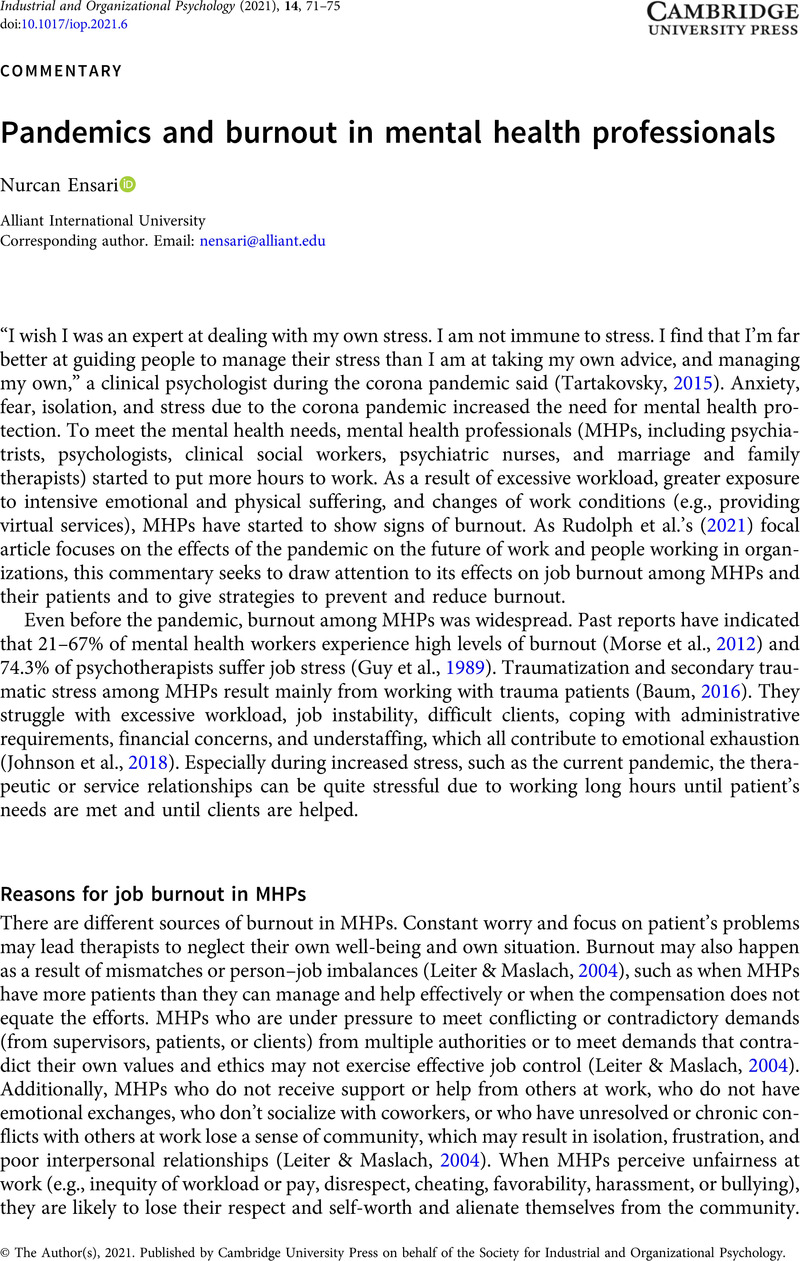Crossref Citations
This article has been cited by the following publications. This list is generated based on data provided by Crossref.
Kar, Nilamadhab
2022.
Mental health of the psychiatrists: A need for reflection.
Odisha Journal of Psychiatry,
Vol. 18,
Issue. 2,
p.
67.
Vivian, Lee Yi Mun
and
Mohamad, Zhooriyati Sehu
2023.
Psychological Impact of Covid-19 Pandemic on Mental Health Practitioners in Selangor, Malaysia.
Malaysian Journal of Medicine and Health Sciences,
Vol. 19,
Issue. 3,
p.
28.
刘, 欣
2024.
Causes and Interventions of Job Burnout in School Counselors.
Advances in Social Sciences,
Vol. 13,
Issue. 08,
p.
410.
Henriques, Joana
Luís, Sílvia
Rivero, Catarina
Gonçalves, Sónia P
Tavares, Lara Patrício
and
Marujo, Helena Á
2024.
The impact of community resilience, well-being, and community attachment on human service workers’ burnout.
Journal of Social Work,
Vol. 24,
Issue. 3,
p.
322.



